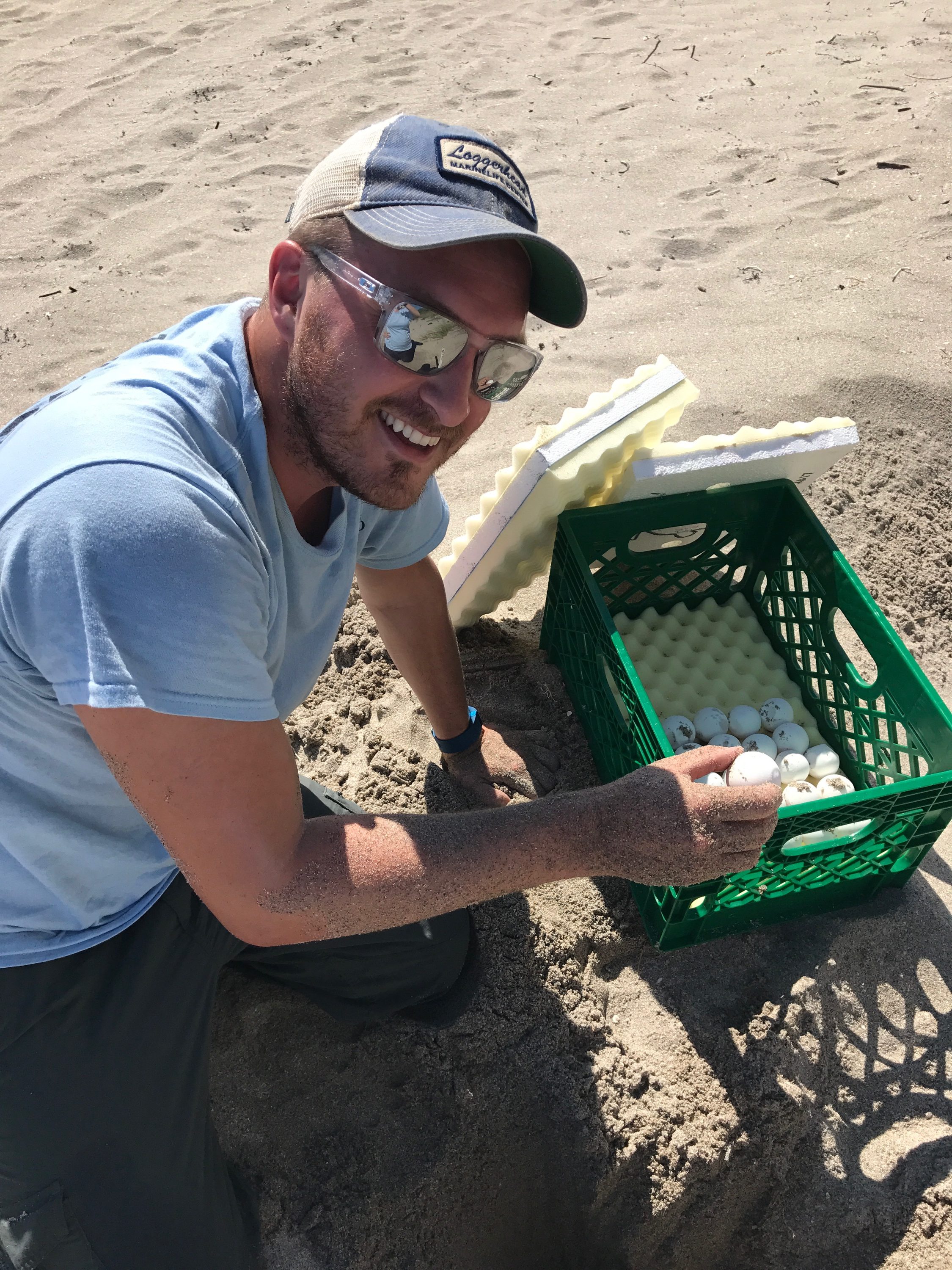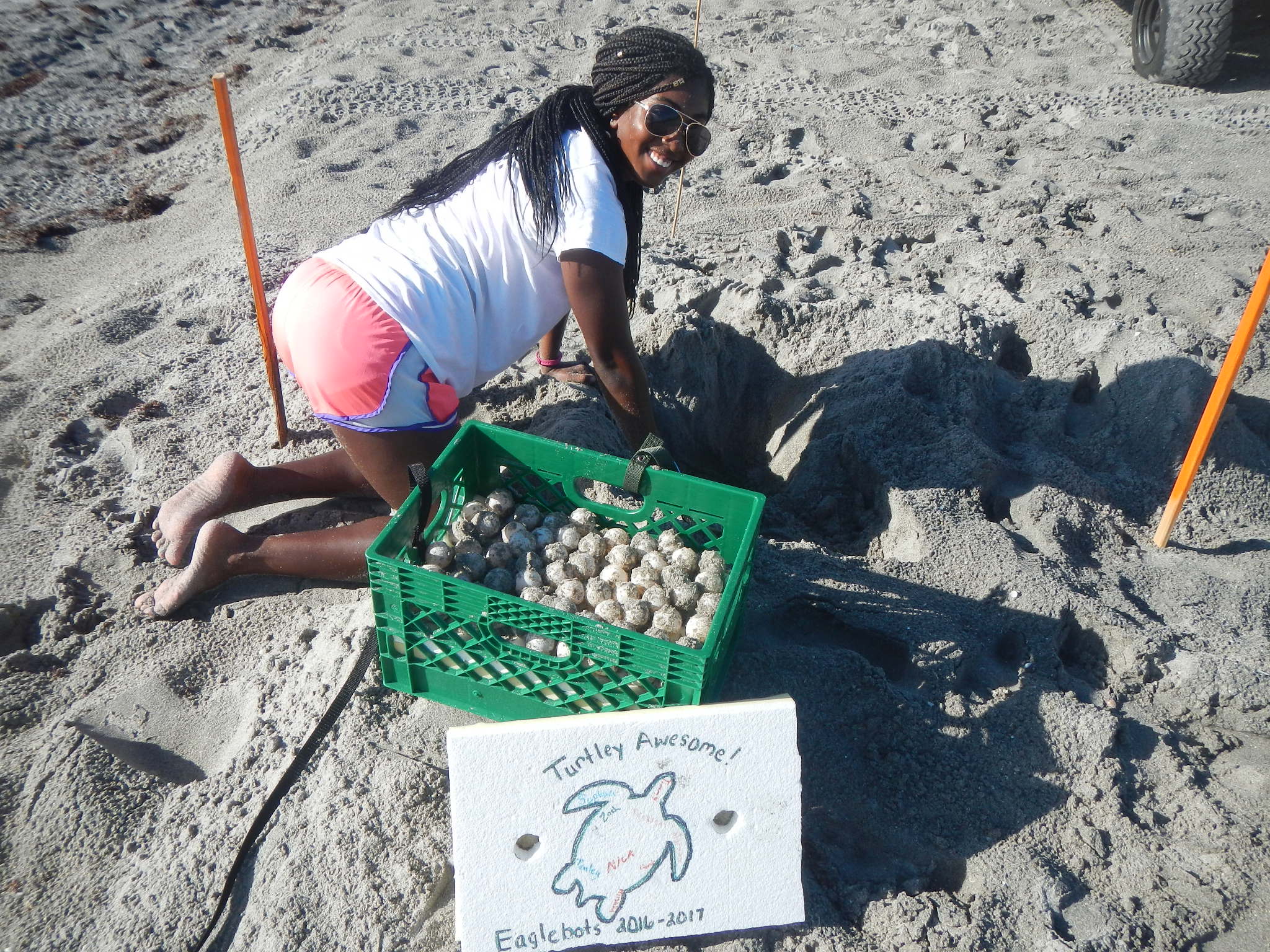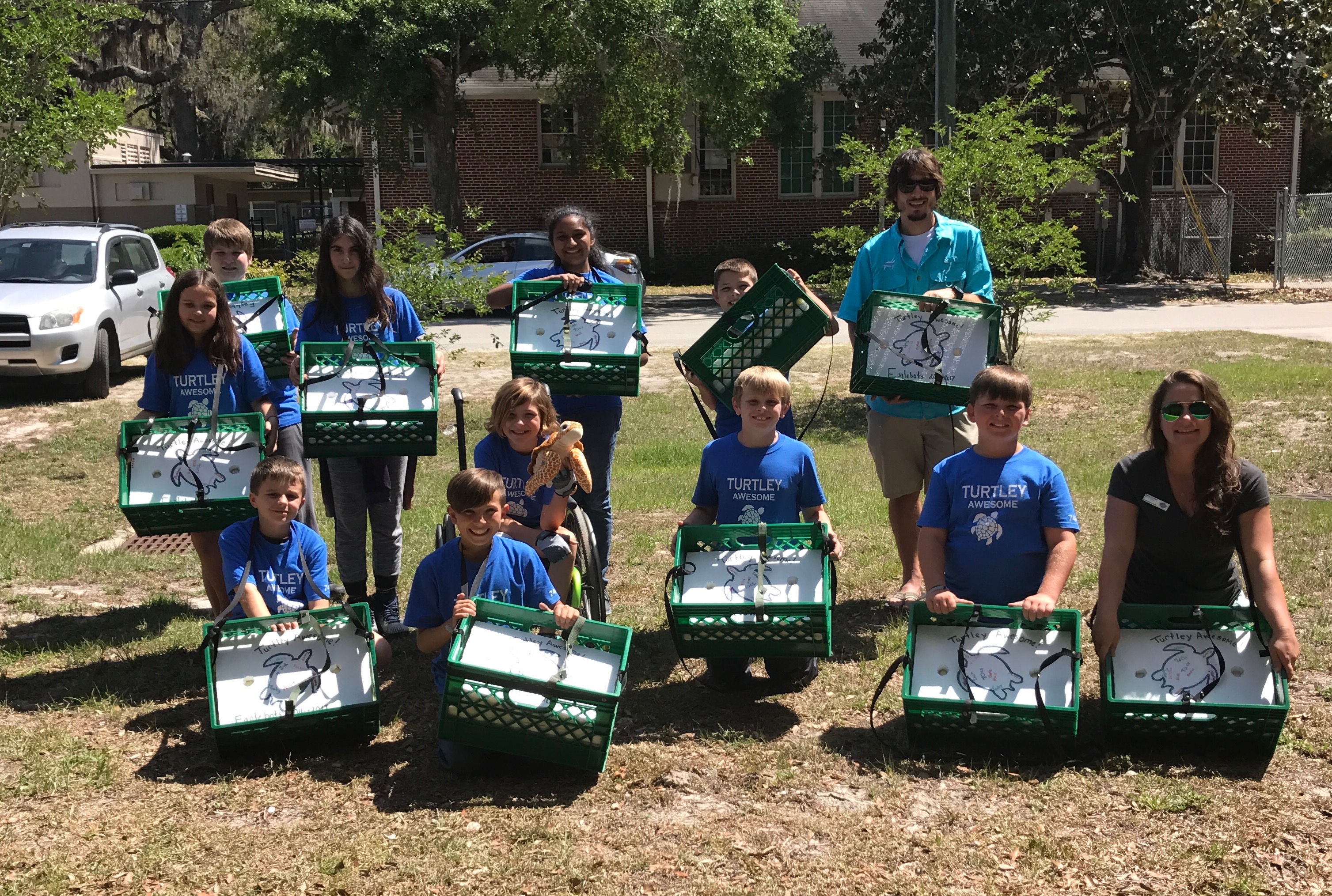ORANGE PARK, Fla. Oct. 16, 2017 — South Florida marine biologists have credited a group of Orange Park Elementary School students with developing a tool to transport endangered sea turtle nests that would have otherwise been destroyed during Hurricane Irma.
The Eaglebots, 10 fifth- and sixth-graders who compete on their school’s FIRST LEGO League robotics team, were tasked with inventing something that would improve human interactions with wildlife. Their coaches, Kimber Rauth and Judy Lewis, reached out to Inwater Research Group, an organization that monitors nearly 10 miles of nesting beach in Martin County for loggerhead, green and leatherback sea turtles.
After asking lots of questions over the course of several Skype sessions, one issue stood out to the students: what happens to the nests in a disaster? Inwater’s biologists told students about one instance following the Deepwater Horizon oil spill where they had to relocate nests away from threatened areas.
“There wasn’t a standard device that would allow organizations to efficiently transport these eggs to safer beaches,” said Mike Bresette, President and Biologist at Inwater.
Inspired to find a solution, the students began developing a device with guidance from Inwater staff, carefully considering the parameters and needs of the biologists to safely transport the eggs.
“I was blown away with what they came up with,” said Rebecca Mott, Education Manager at Inwater. “They really listened to us and developed something that was thoughtful, cost-efficient, and most importantly, effective.”
The Eaglebots presented their Sea Turtle Accessible Relocator (STAR) crate prototype at a robotics tournament in January. Judges were impressed with the students’ ingenuity and thorough research, and awarded them first prize.
“It is thrilling to see how the FIRST robotics program has opened doors for students to engage in work that reaches beyond the walls of the schools and can help solve real problems! Every child needs the opportunity to participate in a program such as this,” said Kathleen Schofield, the K-12 program director for the Northeast Florida Regional STEM2 Hub.
After sharing their win with the team at Inwater, the coaches and students agreed with Inwater to take this prototype one step further by beta testing it with organizations across the state. The Florida Fish and Wildlife Commission verified that use of the prototype on real sea turtle nests was safe and in line with permitting regulations, and Inwater sponsored the students as they developed an additional 20 crates.
Several organizations have partnered with the Eaglebots and Inwater to test the relocation crates on their own nesting beaches, reporting that the crates are not only clever, but also effective as relocating eggs when they had to the potential to wash out from high tides and storm surges.
“I loved their idea of using foam to absorb any shock while moving the eggs from A to B to keep the clutch as safe as possible,” said a sea turtle technician from Gumbo Limbo Nature Center in Boca Raton. “Overall, we think it’s a genius idea from some very creative kids,” commented David Anderson, Sea Turtle Conservation Coordinator at Gumbo Limbo.
One organization found the crates especially useful when relocating eggs prior to Hurricane Irma in September.
“We needed to move a portion of certain nests that were not only crucial to a very important study on sea turtle health but also in danger of washing out, potentially destroying the eggs,” said Justin Perrault of Loggerhead Marinelife Center in Juno Beach. “They not only made the process twice as fast but we were able to move multiple clutches of eggs in one crate safely. I was really impressed that kids came up with the idea.”
What started out as a prototype to aid in disaster preparedness ended up paying off by supplying organizations with a real solution to relocating eggs in dire situations.
“My co-coach Judy Lewis and I are extremely proud of the entire Eaglebot team for the time and effort they invested into inventing the STAR crate,” said Rauth. “Their accomplishment showed that all people young and old can make a difference.”
“This is why research and education should go hand in hand,” said Mott. “We’re helping shape tomorrow’s scientists and environmental stewards. I’m ridiculously proud of everything they accomplished because it’s so well-deserved.”
To watch the Eaglebots presenting their prototype at their tournament, visit https://goo.gl/e8Ck9i.
Attached photos: Eaglebots showing off their hard work with Inwater Research Group staff, Cody Mott (back row) and Rebecca Mott (front row); Gumbo Limbo Nature Center Sea Turtle Tech relocating eggs using the STAR crate; Loggerhead Marinelife Center Assistant Director of Research, Justin Perrault relocating eggs ahead of Hurricane Irma.
About Inwater Research Group
Inwater Research Group is a 501(c)(3) not-for-profit organization with a mission to provide the scientific community and general public with information to promote conservation of coastal and marine species and their habitats.
About the Northeast Florida STEM2 Hub
The Northeast Florida Regional STEM2 Hub represents an investment initially made by 15 companies headquartered in the region. Its mission is to convene, inspire, and invest in the STEM2 field by providing the essential missing elements to accelerate the growth of STEM2 education and careers in the seven North Florida counties of Baker, Clay, Duval, Flagler, Nassau, Putnam, and St. Johns. For a list of the current corporate board members and more information about the STEM2 Hub in Northeast Florida, visit stem2hub.org.
###


